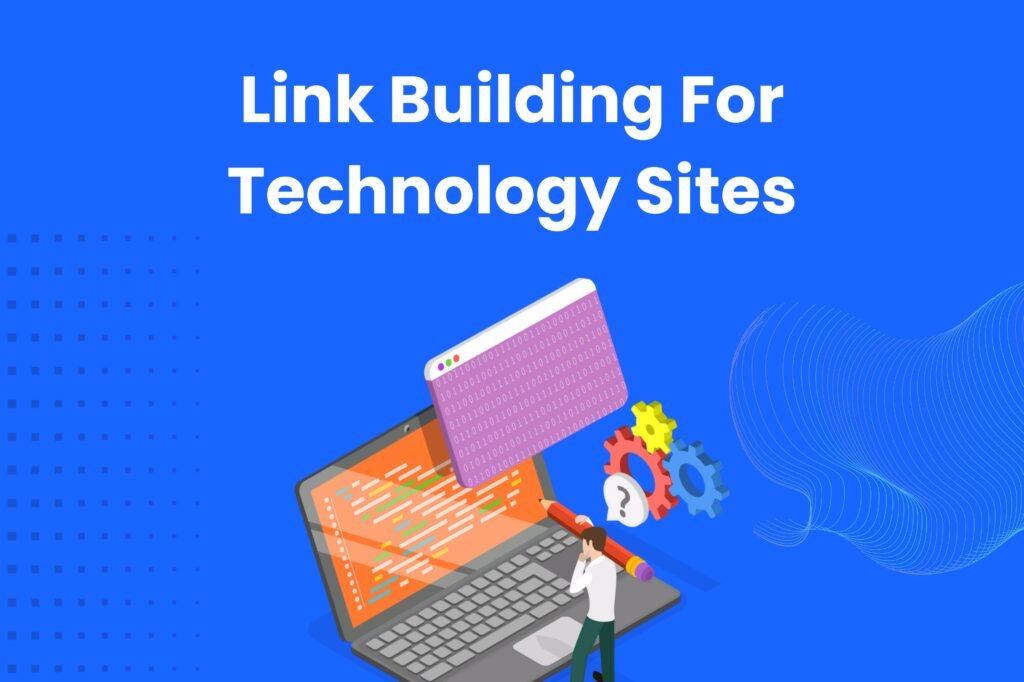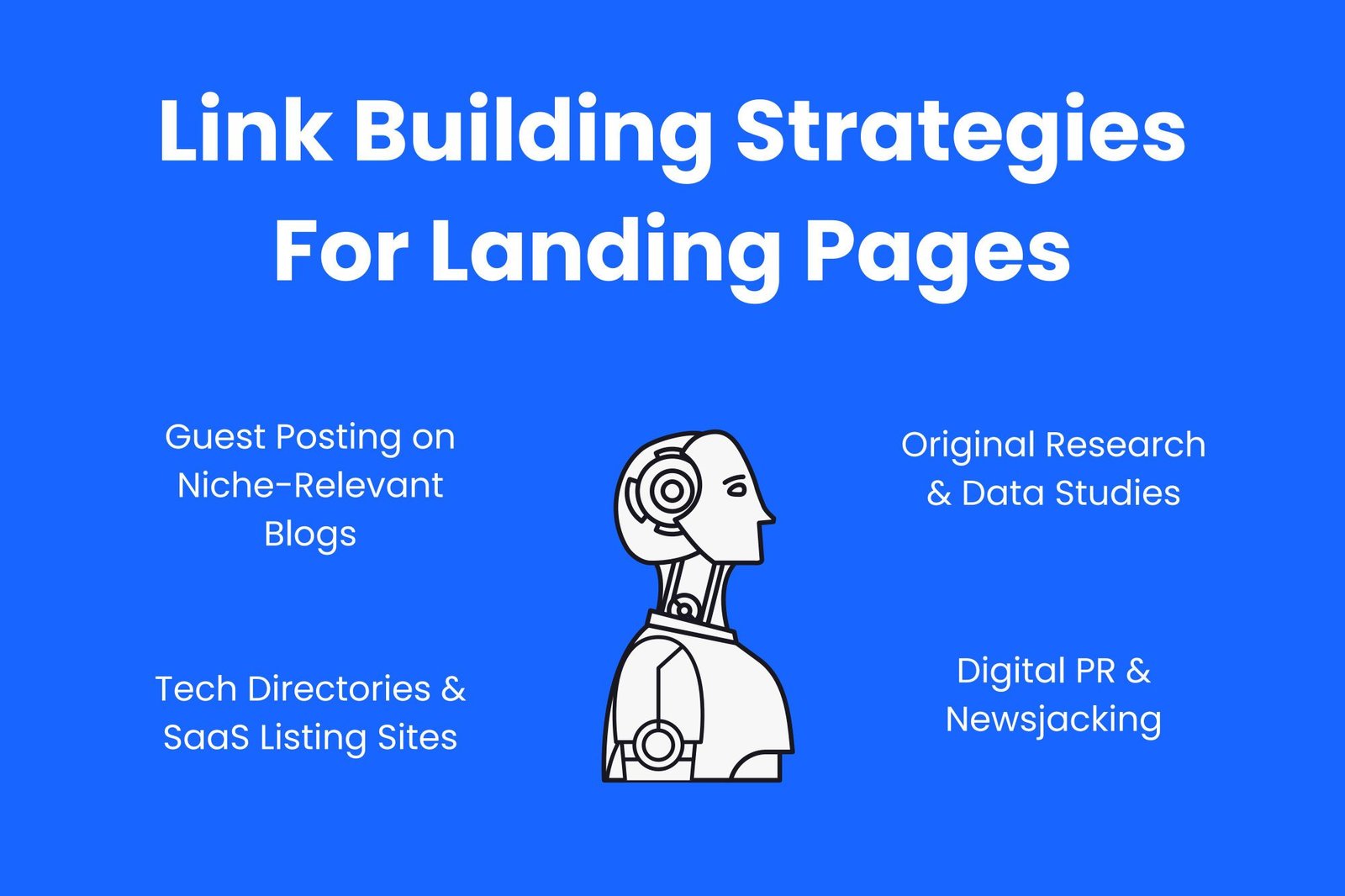
In the fast-moving world of technology, standing out is no easy feat. Whether you’re a SaaS startup, a developer tool, or a tech blog, link building can be your secret weapon for climbing the search rankings and driving targeted traffic. But link building for tech sites isn’t the same as link building for lifestyle or e-commerce sites — it comes with its own set of challenges and opportunities.
In this comprehensive guide, I’ll walk you through proven strategies, analytics to measure success, common pitfalls to avoid, and more — all from the perspective of someone who’s been in the trenches helping tech businesses grow.
Why Link Building is Crucial for Tech Sites
Technology websites — whether product-driven or content-driven — live and die by their authority. Google needs to trust your site, and backlinks are one of the strongest signals of that trust. But it’s more than just SEO:
- High-quality backlinks bring referral traffic from relevant audiences (developers, IT decision-makers, startups, etc.)
- They position your brand as an authority in your niche
- They can open doors to partnerships, PR opportunities, and more
A solid link profile can make the difference between being on page 5 or page 1 of the search results for critical keywords like “best API testing tool” or “cloud storage for developers.”
Link Building Strategies for Technology Sites

Let’s break down actionable, effective strategies that actually work for tech businesses.
1️⃣ Guest Posting on Niche-Relevant Blogs
Guest posting is far from dead — it’s just evolved. Instead of mass outreach, focus on high-authority, relevant blogs. Pitch topics that add value to their audience (think case studies, in-depth tutorials, or original research).
👉 Example: If you’re marketing a cybersecurity product, pitch blogs like SecurityWeek or Dark Reading with a post on “Emerging Threats in 2025 — What CISOs Need to Know.”
🔑 Tip: Ensure your guest post links point naturally to your landing pages, product pages, or high-value content. Avoid over-optimizing anchor text.
2️⃣ Tech Directories & SaaS Listing Sites
Get your tool or product listed on reputable directories:
- G2
- Capterra
- Product Hunt
- AlternativeTo
- StackShare
These links not only help SEO but also drive highly qualified traffic from buyers actively looking for solutions.
3️⃣ Original Research & Data Studies
Create unique, data-driven content that others will want to cite. Tech journalists and bloggers love fresh stats.
👉 Example: A SaaS analytics tool could publish an annual report on “App Engagement Benchmarks” and earn links from media, blogs, and partners.
4️⃣ Digital PR & Newsjacking
Tech media is always looking for fresh stories. Share your insights on trending topics (AI, cybersecurity breaches, cloud innovations) with journalists using platforms like:
- HARO
- Terkel
- Qwoted
Position yourself or your founders as thought leaders.
5️⃣ Free Tools, Templates, or APIs
Offer a free calculator, API, or template. Promote it on GitHub, tech forums, or through partnerships.
👉 Example: A cloud storage service could offer a free “storage cost estimator” — a magnet for backlinks from bloggers comparing storage solutions.
6️⃣ Community Engagement
Be active where your audience hangs out:
- Stack Overflow
- Reddit (subreddits like r/webdev, r/sysadmin)
- Hacker News
- Indie Hackers
While these won’t always give you dofollow links, they drive brand awareness and organic linking as people discover and share your contents.
7️⃣ Broken Link Building
Use tools like Ahrefs to find broken outbound links on tech blogs. Offer your content as a replacement.
Analytics: How to Measure Link Building Success for Tech Sites
Let’s talk about what really matters: results. Link building for tech sites isn’t about vanity metrics — it’s about driving meaningful outcomes.
Key Metrics to Track
Referral Traffic
Measure not just how many visitors you’regetting, but who they are:
• Are they from relevant sources?
• Do they engage with your content
• Do they convert?
Use GA4 to segment referral traffic and study:
- Session duration
- Bounce rate
- Pages/session
- Conversion rates
Keyword Rankings
Are your target keywords moving up? Tools like Ahrefs and SEMrush can track this. Focus on both branded (e.g., your product name) and non-branded keywords (e.g., “best CI/CD tool”).
Conversions
Set up conversion goals:
- Free trial signups
- Demo requests
- API key requests
- Downloads
Track assisted conversions to see which links bring people into the funnel.
Domain Authority of Linking Sites
Focus on high-DA, niche-relevant links over sheer quantity.
Link Velocity & Diversity
Are links growing steadily? Are you getting links from a range of sources (blogs, media, tools, communities)
Tools I Recommend
- Google Search Console — See who links to you.
- Google Analytics (GA4) — Track traffic, conversions.
- Ahrefs / SEMrush / Moz — Backlink quality, link velocity.
- Looker Studio — Build reporting dashboards.
Pro Tips
- Use UTM parameters to track outreach links.
- Review analytics monthly.
- Combine data sources for richer insights.
Common Mistakes and Pitfalls
✅ Over-optimizing anchor text —
Using exact-match keywords too often in your anchor text can make your backlink profile look unnatural to Google. This might trigger penalties or harm your rankings. Aim for a natural mix of branded, generic, and partial-match anchors.
✅ Chasing low-quality links —
It’s tempting to get as many backlinks as possible, but links from spammy or irrelevant sites can do more harm than good. A few high-quality, relevant backlinks from authoritative sites will always outweigh dozens of poor-quality ones.
✅ Ignoring internal linking —
Many overlook the power of internal links. Strategically linking between your own pages strengthens your site structure, helps distribute link equity, and improves user navigation — all of which can boost your SEO performance.
✅ Forgetting to track —
If you don’t monitor your backlinks, referral traffic, and keyword rankings, you won’t know what’s working or where to improve. Using tools like Google Analytics and Search Console is essential for measuring the real impact of your link-building efforts.
✅ Link spikes —
Building too many links in a short time can raise red flags with search engines. Instead, focus on acquiring links at a steady, natural pace. Gradual link growth looks more organic and is safer for your site’s long-term SEO health.
Advanced Tactics
Build a Content Cluster
Create related blogs, guides, and resources that all point back to your product or service pages.
Sponsor Tech Events or Podcasts
Gain backlinks + brand exposure.
Create Visual Content
Infographics, charts, or tools earn natural links.
FAQs
1. How long does it take to see results from link building?
Typically 3-6 months, but this varies based on competition and your starting point.
2. Is it okay to buy links?
I strongly advise against it. Focus on earning links organically — it’s safer and more sustainable.
3. Should I focus on dofollow or nofollow links?
Prioritize dofollow for SEO value, but nofollow links from high-traffic, trusted sources can still drive valuable visitors.
4.What types of content attract the most backlinks for tech websites?
From my experience, the following types of content perform best:
• Original research and data reports (e.g., industry trends, benchmarks)
• How-to guides and tutorials on complex tech topics
• Free tools, calculators, or generators
• Infographics or interactive visualizations
• Thought leadership articles or expert roundups
These formats naturally earn links because they provide unique value others want to reference.
5. Should I focus on dofollow or nofollow backlinks?
Both can be valuable. While dofollow links directly pass SEO authority, nofollow links from high-traffic sites (like major tech publications or forums) can drive referral traffic, build brand awareness, and diversify your backlink profile — which looks more natural to search engines.
6. How many backlinks does a tech site need to rank on Google?
There’s no magic number. It depends on your competition, keyword difficulty, and the quality of the links. In competitive tech niches, it’s better to have 10 high-authority, relevant links than 100 low-quality ones. Focus on earning links that genuinely add value.
7. How can I find link opportunities for my tech site?
Here are some practical ways:
• Use tools like Ahrefs, SEMrush, or BuzzSumo to analyze where competitors are getting links.
• Set up Google Alerts for your brand or topics you cover — so you can spot unlinked mentions.
• Participate in tech communities like GitHub, Reddit, Hacker News, or Stack Overflow.
• Pitch to tech journalists and contribute to industry blogs.
8. What’s the role of internal links in a link building strategy for tech sites?
Internal links help distribute link equity (or “link juice”) across your site. When an external site links to a blog post or tool, your internal links ensure that authority benefits your key landing pages, product pages, or resource hubs. Never overlook this!
Final Thoughts
Link building for tech sites isn’t about gaming Google — it’s about building genuine authority and visibility. Focus on value, relevance, and long-term relationships, and your link building efforts will pay off in both rankings and real business growth.
